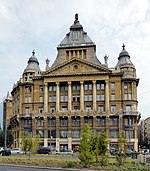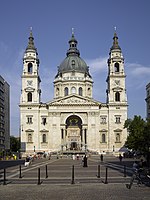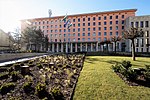Bajcsy-Zsilinszky út metro station

Bajcsy-Zsilinszky út (Bajcsy-Zsilinszky street) is a station of the yellow M1 (Millennium Underground) line of the Budapest Metro. The station was opened on 2 May 1896 as part of the inaugural section of the Budapest Metro, between Vörösmarty tér and Széchenyi fürdő. This section, known as the Millennium Underground Railway, was the first mostro system in continental Europe. In 2002, it was included into the World Heritage Site "Budapest, including the Banks of the Danube, the Buda Castle Quarter and Andrássy Avenue".It is named for Endre Bajcsy-Zsilinszky a member of the Independent Smallholders, Agrarian Workers and Civic Party and leader of the resistance who was executed toward the end of the Second World War. It was formerly named Váczy körút.
Excerpt from the Wikipedia article Bajcsy-Zsilinszky út metro station (License: CC BY-SA 3.0, Authors, Images).Bajcsy-Zsilinszky út metro station
Andrássy út, Budapest Terézváros
Geographical coordinates (GPS) Address Nearby Places Show on map
Geographical coordinates (GPS)
| Latitude | Longitude |
|---|---|
| N 47.4994 ° | E 19.055 ° |
Address
Andrássy út 1
1061 Budapest, Terézváros
Hungary
Open on Google Maps











